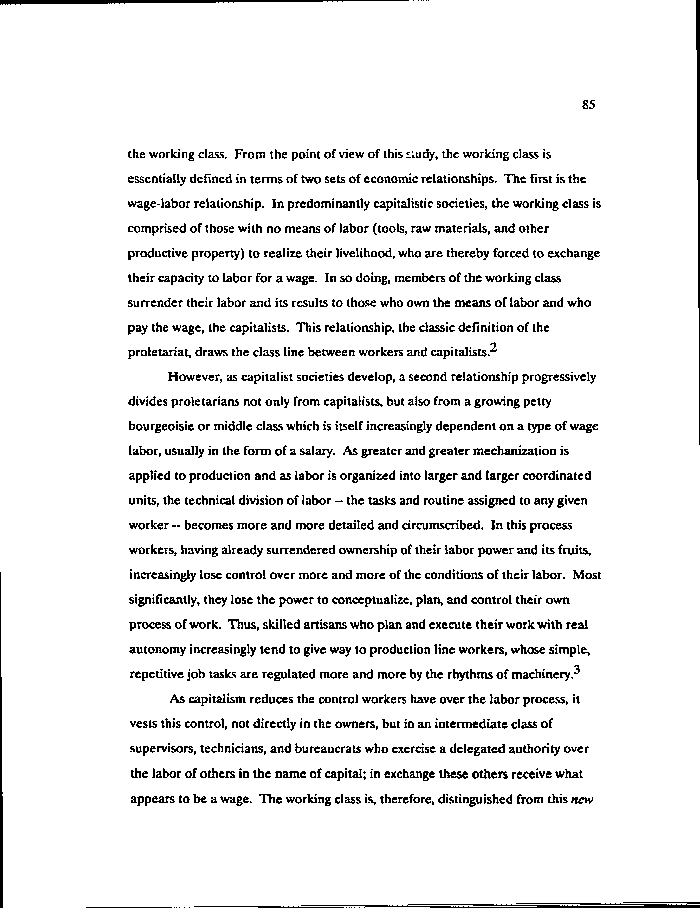|
85
the working class. From the point of view of this study, the working class is
essentially defined in terms of two sets of economic relationships. The first is the
wage-labor relationship. In predominantly capitalistic societies, the working class is
comprised of those with no means of labor (tools, raw materials, and other
productive property) to realize their livelihood, who are thereby forced to exchange
their capacity to labor for a wage. In so doing, members of the working class
surrender their labor and its results to those who own the means of labor and who
pay the wage, the capitalists. This relationship, the classic definition of the
^
proletariat, draws the class line between workers and capitalists.
However, as capitalist societies develop, a second relationship progressively
divides proletarians not only from capitalists, but also from a growing petty
bourgeoisie or middle class which is itself increasingly dependent on a type of wage
labor, usually in the form of a salary. As greater and greater mechanization is
applied to production and as labor is organized into larger and larger coordinated
units, the technical division of labor - the tasks and routine assigned to any given
worker — becomes more and more detailed and circumscribed. In this process
workers, having already surrendered ownership of their labor power and its fruits,
increasingly lose control over more and more of the conditions of their labor. Most
significantly, they lose the power to conceptualize, plan, and control their own
process of work. Thus, skilled artisans who plan and execute their work with real
autonomy increasingly tend to give way to production line workers, whose simple,
repetitive job tasks are regulated more and more by the rhythms of machineryr
As capitalism reduces the control workers have over the labor process, it
vests this control, not directly in the owners, but in an intermediate class of
supervisors, technicians, and bureaucrats who exercise a delegated authority over
the labor of others in the name of capital; in exchange these others receive what
appears to be a wage. The working class is, therefore, distinguished from this new
|

